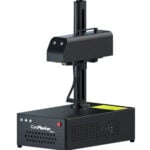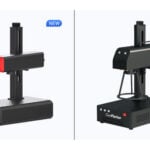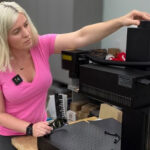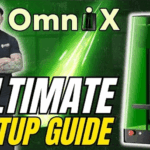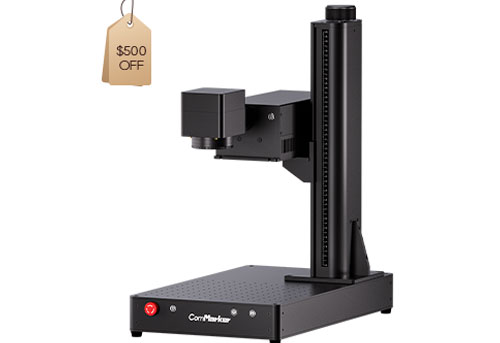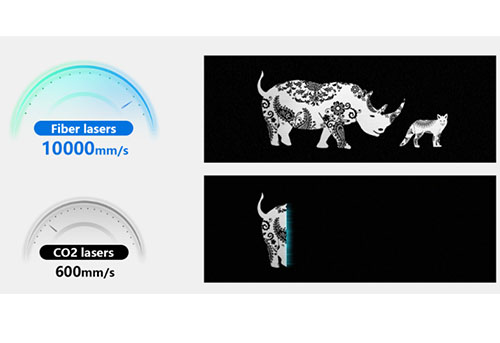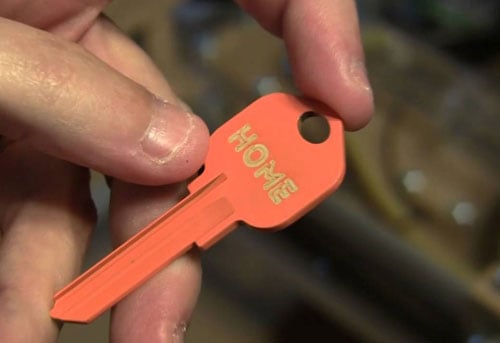How well does a UV laser engraver work on transparent materials like glass and plastic? In this test, we used the ComMarker Omni 1 UV laser engraver to explore its real-world performance on thin plastic sheets and transparent flat glass. If you work with signage, glass packaging, or precision labeling, you’ll want to see these results.
Part 1: Engraving on Transparent Plastic Sheet
We started by engraving a transparent plastic sheet often used in protective films or packaging materials. Despite the material’s clarity, the Omni 1 UV laser produced crisp, high-contrast text and graphics that looked sharp even under direct light.
Key Takeaways:
- Clean lines with no burn marks or melting.
- Excellent legibility, even on ultra-thin plastic.
- No deformation or warping during laser exposure.
Why UV works well on plastic:
UV lasers operate at a 355nm wavelength, which is better absorbed by plastics—especially transparent ones—compared to CO₂ or fiber lasers. This means less heat and more precision.
Recommended Settings (Plastic):
- Power: 50–60%
- Speed: 2000–3000 mm/s
- Frequency: Medium (50–100 kHz)

Part 2: UV Laser Engraving on Transparent Glass
Next, we moved on to flat transparent glass, one of the more difficult materials to laser engrave due to its hardness and smooth surface.
We tested two different engraving modes using the ComMarker Omni 1:
Test A: Standard Text Engraving
- Laser produced evenly frosted text with clear lines.
- No cracks or chips—just smooth engraving.
- Depth was visible under close inspection, but surface remained clean.
Test B: Refined Detail Test (Different Parameters)
- Adjusted settings for sharper results.
- Text edges became more defined, suitable for fine design or branding.
- Demonstrated the Omni 1’s ability to control engraving texture via power and frequency.
Why UV Lasers Excel on Glass:
UV engraving doesn’t use high heat to mark the surface. Instead, it works through a process called “cold marking,” which avoids thermal stress and cracking. This makes UV laser engravers ideal for detailed work on glassware, electronics, and decorative panels.
Recommended Settings (Glass):
| Test | Power | Speed | Frequency | Result |
|---|---|---|---|---|
| A | 70% | 1500 mm/s | 40 kHz | Frosted, smooth finish |
| B | 60% | 1800 mm/s | 60 kHz | Sharper edges, cleaner lines |

Use Case Ideas for Glass and Plastic Engraving
If you’re using a laser engraver for small-scale production, custom gifts, or branding materials, the ComMarker Omni 1 UV model opens up a wide range of applications:
- Plastic Packaging – Labels, serial numbers, branding.
- Glass Signage – Office doors, restroom markers.
- Custom Drinkware – Logos on wine glasses or mugs.
- Acrylic Crafting – Light guides, ornaments, and product displays.
Why the ComMarker Omni 1 UV Laser Engraver is Ideal for Fine-Detail Engraving on Metal and Plastics
How well does a UV laser engraver work on transparent m…
The ComMarker Omni 1 UV laser engraver handled both plastic and transparent glass with exceptional control. It proved capable of delivering fine detail, clean lines, and professional-grade results without damaging delicate surfaces. If your projects require precision on transparent materials, a UV laser like this is worth serious consideration.

